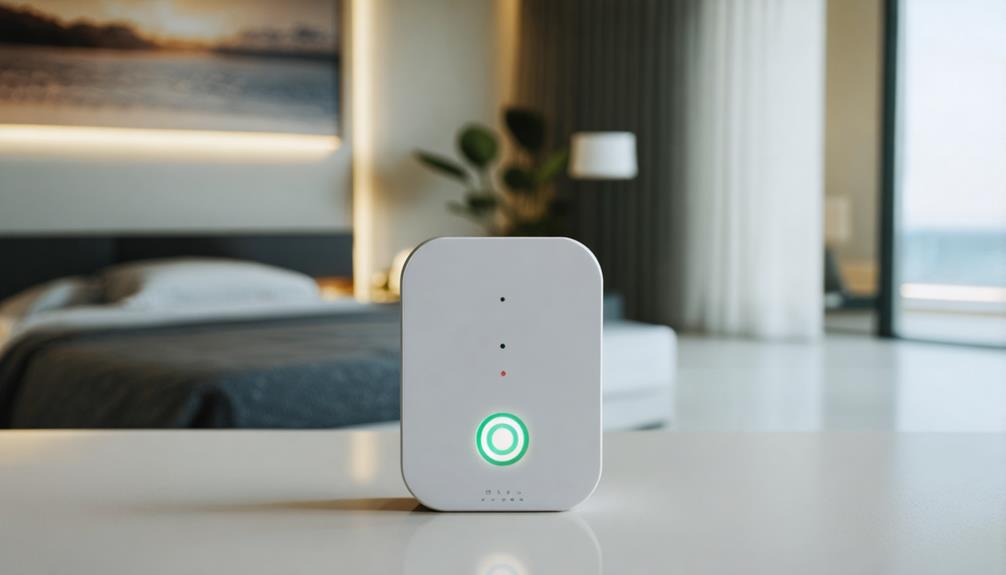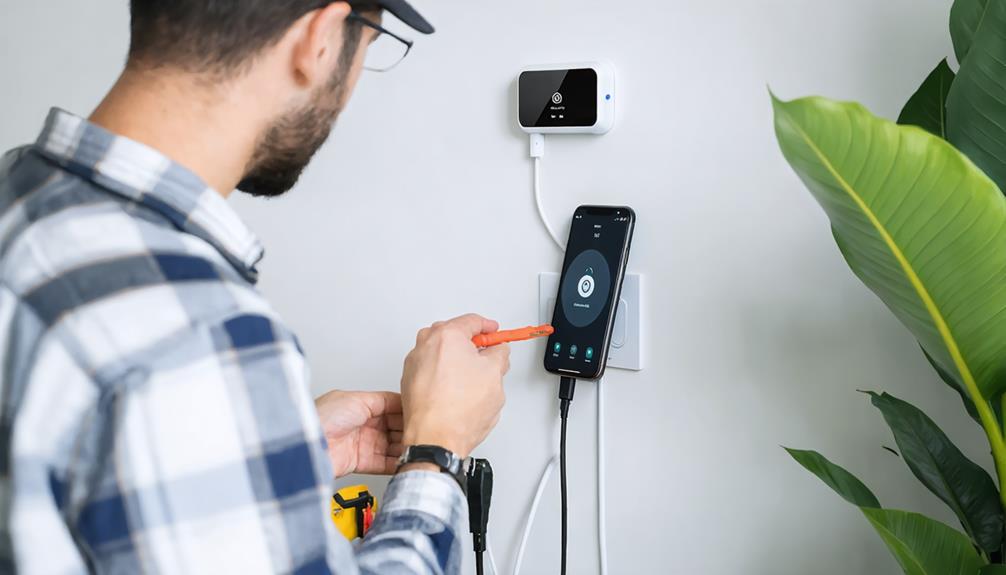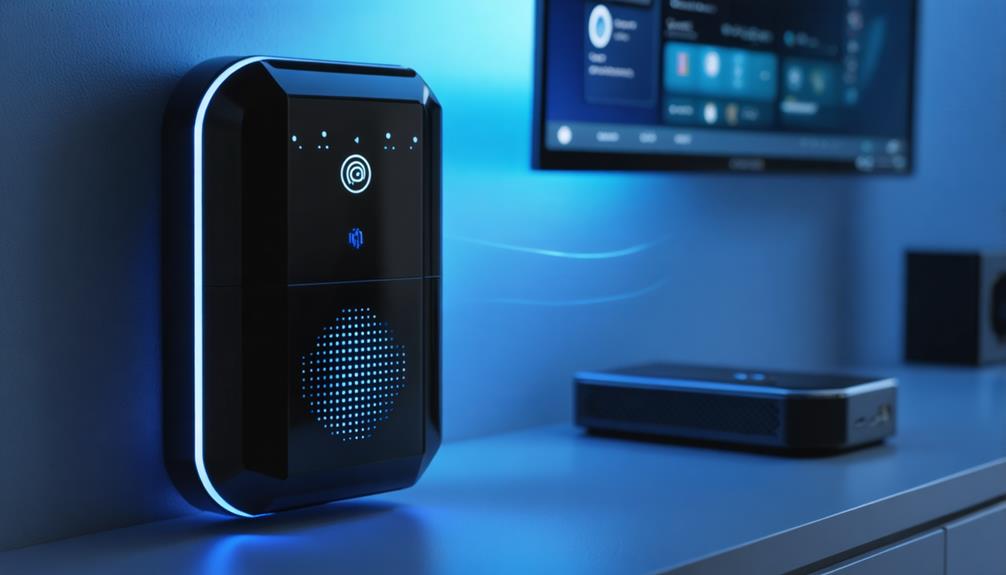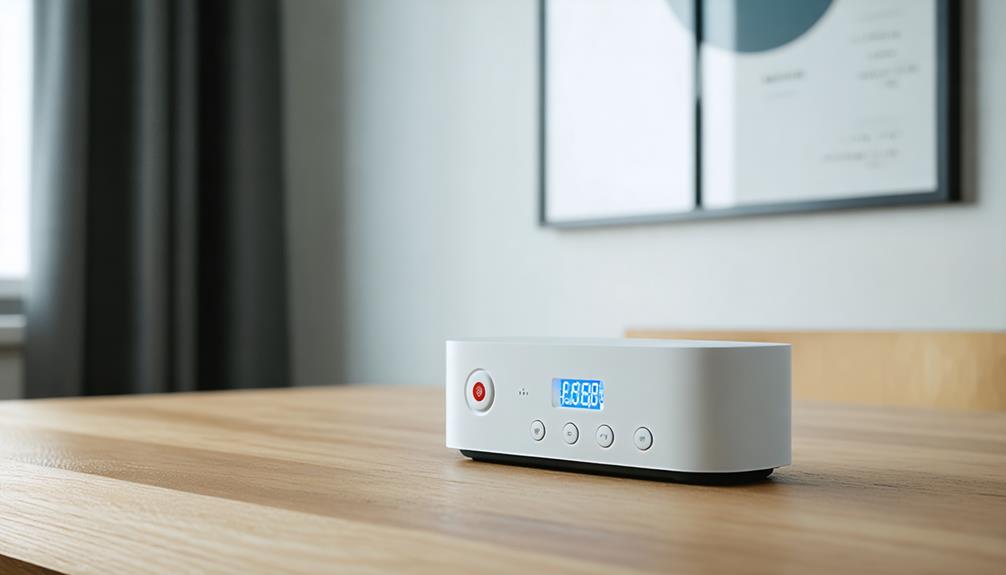
Brainstorm Security Shop

For Orders Over $199

On Any Of Our Products

Details On Refund Page
In an increasingly unpredictable world, panic alarms have emerged as vital tools for ensuring personal safety, offering rapid assistance at the mere press of a button. These devices, ranging from discreet wearables to sophisticated mobile apps, are designed to cater to diverse security needs. Their integration with GPS and smart technology further amplifies their effectiveness, offering a seamless blend of innovation and security. However, the question arises: with so many options available, how does one determine the most suitable panic alarm for their unique circumstances? Understanding the intricacies of these devices could be the key to making an informed choice.
Understanding the different types of panic alarms is crucial for selecting the right system to ensure safety and security in various environments. Panic alarms, designed to bolster personal safety during emergency situations, come in various forms, each tailored to specific needs and contexts. These devices are invaluable in promptly alerting authorities or designated responders about ongoing threats, ensuring that help arrives swiftly.
One prevalent type is the wearable panic alarm, which is often integrated into jewelry or accessories, allowing discreet activation during emergency situations. This form is ideal for individuals who require a subtle yet effective means of protection, such as those in high-risk professions or vulnerable individuals seeking enhanced personal safety.
Another common type is the stationary panic alarm, frequently installed in workplaces, schools, or public spaces. These alarms are strategically placed for easy access during emergencies, enabling rapid communication with security personnel or local authorities.
Additionally, mobile phone-based panic alarm applications have gained popularity, offering a convenient solution for users to trigger alerts through their smartphones. These apps can automatically send location data and emergency contacts, providing a comprehensive response mechanism.
Each type of panic alarm serves a unique purpose, catering to diverse safety needs.
Understanding the functionality of panic alarms involves examining the activation and response process, signal transmission methods, and their integration with broader security systems.
When activated, these alarms immediately send a signal using various transmission methods such as wired, wireless, or cellular networks.
Effective integration with existing security infrastructure ensures a swift response from emergency services, enhancing overall safety and security.
How exactly does a panic alarm function in critical situations? At its core, a panic alarm is designed to provide immediate assistance during emergencies. The activation procedures typically involve a discreet button press, which can be located in various strategic locations or carried as a personal device. This action sets off a silent alert to notify security personnel or emergency services without alerting the potential threat.
Upon activation, the response protocols are crucial for ensuring safety and handling the situation effectively. These protocols include:
In critical situations, the effectiveness of a panic alarm largely hinges on its signal transmission methods. The reliability and speed with which a panic alarm transmits its signal to the appropriate response team can make a significant difference in outcome. Wireless technology plays a pivotal role in this process, offering flexibility and mobility that traditional wired systems cannot match. These wireless systems utilize radio frequency (RF) signals to communicate, ensuring that alerts are sent promptly, regardless of the user’s location within the signal range.
The signal range of a panic alarm is crucial; it determines how far the signal can travel without interference or loss of fidelity. Factors such as building materials, environmental obstacles, and electronic interference can impact the signal range, making it essential to choose a system that can operate effectively within the designated area.
| Transmission Method | Technology Used | Signal Range |
|---|---|---|
| Wired | Physical cables | Limited to cable length |
| Wireless | RF Technology | Up to several kilometers |
| Cellular | Mobile Networks | Very wide, network-dependent |
| Satellite | Satellite Links | Global coverage |
To enhance the overall security infrastructure, integrating panic alarms with existing security systems is a strategic necessity. Such integration ensures a seamless operational flow, enhancing both system compatibility and user experience.
Modern security environments demand that different systems work in tandem to provide a comprehensive safety net. Therefore, panic alarms must be designed to communicate effectively with existing security protocols. This integration leads to streamlined processes, reducing response times and improving incident management.
To achieve successful integration, consider the following crucial factors:

The implementation of panic alarms significantly enhances personal security by providing individuals with a reliable tool to summon help during emergencies.
These devices facilitate a quick emergency response, ensuring that assistance arrives promptly when it is most needed.
Additionally, the presence of a panic alarm can greatly increase peace of mind, as users feel more secure knowing they have immediate access to aid.
Personal security is a growing concern in today’s unpredictable world, making the use of panic alarms increasingly vital. These devices serve as essential tools in safeguarding individuals by enhancing their personal safety and ensuring a state of emergency preparedness.
Panic alarms offer peace of mind by providing a reliable mechanism to alert authorities or trusted contacts in critical situations, thus acting as a crucial component in one’s overall security strategy.
The benefits of panic alarms in enhancing personal security can be understood through the following aspects:
Swift intervention can mean the difference between safety and peril in critical situations, and panic alarms are instrumental in facilitating a quick emergency response. These devices serve as essential tools in enhancing emergency preparedness by ensuring that help is summoned promptly when needed.
In scenarios where seconds count, such as home invasions, medical emergencies, or workplace threats, the ability to immediately alert authorities or designated responders can significantly improve outcomes.
The integration of panic alarms into personal safety protocols allows individuals to rapidly communicate their distress without the need for verbal articulation, which might be compromised in high-stress situations. This quick response capability is particularly vital in environments where traditional communication methods may be unavailable or impractical.
Moreover, modern panic alarm systems often include features that automatically relay precise location information to emergency responders, thereby minimizing delays and optimizing resource allocation.
For businesses, the implementation of panic alarms represents a proactive stance in emergency preparedness, ensuring that staff and customers are protected.
Peace of mind is a significant benefit offered by the use of panic alarms, providing individuals and organizations with a sense of security and control over potential emergencies.
Such devices are instrumental in enhancing emotional wellbeing by minimizing the anxiety associated with unforeseen threats. Panic alarms contribute to stress management, offering a reliable solution that ensures swift access to assistance when faced with critical situations.
In today’s fast-paced world, the risk of unexpected events can often lead to heightened stress levels. Panic alarms serve as a proactive measure to alleviate these concerns by offering several advantages:
Selecting the appropriate panic alarm requires a thorough understanding of several key factors to ensure optimal safety and reliability. Personal safety should be at the forefront when evaluating panic alarms.
Consideration of the device’s ease of use is crucial, as it must be readily accessible and operable during high-stress situations. A straightforward activation mechanism, such as a single-button press, can significantly enhance emergency preparedness, especially for individuals with limited mobility or those prone to panic.
Another important aspect is the alarm’s communication capabilities. Devices that connect to monitoring centers or directly alert local authorities can provide an additional layer of security.
Evaluate whether the alarm supports multiple communication methods, such as cellular, Wi-Fi, or landline connections, to ensure functionality even when one method is compromised.
Battery life and power source should not be overlooked. Opt for models with long-lasting batteries or rechargeable options to mitigate the risk of failure during critical moments.
Additionally, assess the range and coverage area of the alarm, ensuring it is suitable for the intended environment, whether it be a home, workplace, or public space.
Selecting the right panic alarm involves balancing these factors to create a comprehensive safety solution.

Once the appropriate panic alarm has been selected, attention turns to its installation and setup, which are vital for ensuring the device functions correctly in times of need. Proper installation and setup not only ensure the reliability of the alarm but also maximize its effectiveness during emergencies.
To achieve optimal performance, consider the following installation tips and setup instructions:
Incorporating smart technology into panic alarm systems significantly enhances their functionality and user experience. By integrating with smart home systems, panic alarms can communicate seamlessly with various connected devices, offering users an elevated level of security and convenience.
For instance, upon activation, an integrated panic alarm can automatically lock doors, turn on security cameras, and alert emergency contacts, all through a centralized smart home hub. This level of smart home integration ensures that users have a comprehensive and cohesive security solution, reacting swiftly to potential threats.
Wearable technology also plays a crucial role in advancing panic alarm systems. Devices such as smartwatches and fitness trackers can now incorporate panic alert functionalities, allowing users to discreetly trigger an alarm without reaching for a traditional device.
This not only offers a layer of discretion but also ensures that individuals have immediate access to emergency assistance regardless of their location. Furthermore, these wearable devices can be programmed to share real-time location data with emergency responders, facilitating quicker and more efficient response times.
The synergy between smart home integration and wearable technology thus represents a significant leap forward in personal and home security, addressing the evolving needs of users.

Building upon the advancements in smart technology integration, the future trends in panic alarms are set to revolutionize personal safety and emergency response systems.
These innovations target enhancing emergency preparedness and user accessibility, ensuring that panic alarms are more effective and user-friendly than ever before. The following outlines three key trends shaping the future of panic alarms:
These trends underscore the importance of continuously evolving panic alarm systems to meet the demands of a rapidly changing world, enhancing safety and security for all users.
In the event of an accidental activation, promptly follow established response protocols. Notify relevant authorities or security personnel to prevent unnecessary emergency responses and ensure the system is reset to avoid future false alarms.
Utilizing any emergency alert system entails understanding potential legal responsibilities and liability issues. Misuse or false activation may lead to legal consequences, emphasizing the importance of knowing operational protocols and adhering to relevant regulations to mitigate risks.
Regular testing frequency is crucial for ensuring alarm maintenance and functionality. It is advisable to conduct tests at least monthly to identify potential issues promptly, thereby maintaining reliability and effectiveness in emergency situations.
Outdoor safety systems can be effectively utilized in various environments, including open-air settings. The alarm effectiveness largely depends on environmental factors, installation quality, and maintenance, ensuring reliable performance across diverse outdoor conditions. Regular testing is essential.
The costs associated with maintaining a security system encompass various elements, including installation expenses, ongoing monitoring fees, and maintenance costs. Additionally, periodic equipment upgrades are necessary to ensure system reliability and effectiveness, contributing to overall operational expenditures.
Panic alarms are critical safety tools that enhance personal security by facilitating rapid responses to emergencies. Available in various forms, including wearable devices, stationary units, and mobile apps, these alarms utilize features such as GPS tracking and smart technology integration to ensure effective assistance. Selecting the appropriate panic alarm, coupled with proper installation and setup, maximizes their benefits. As technology advances, the future of panic alarms promises even greater innovation and efficiency in safeguarding individuals and communities.
